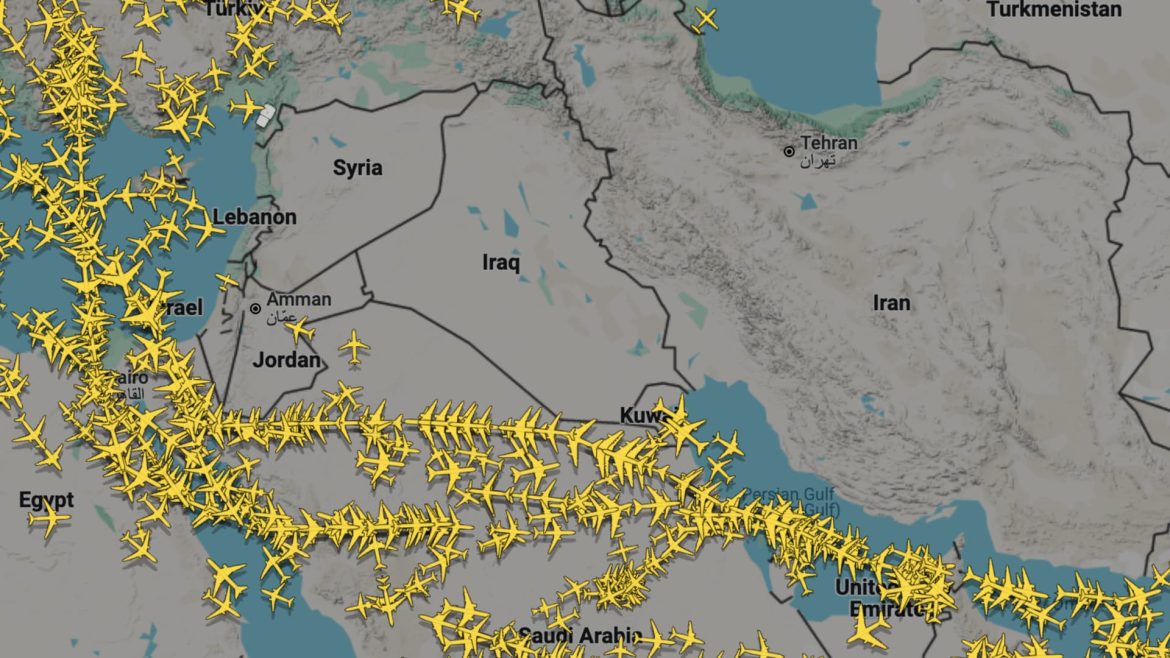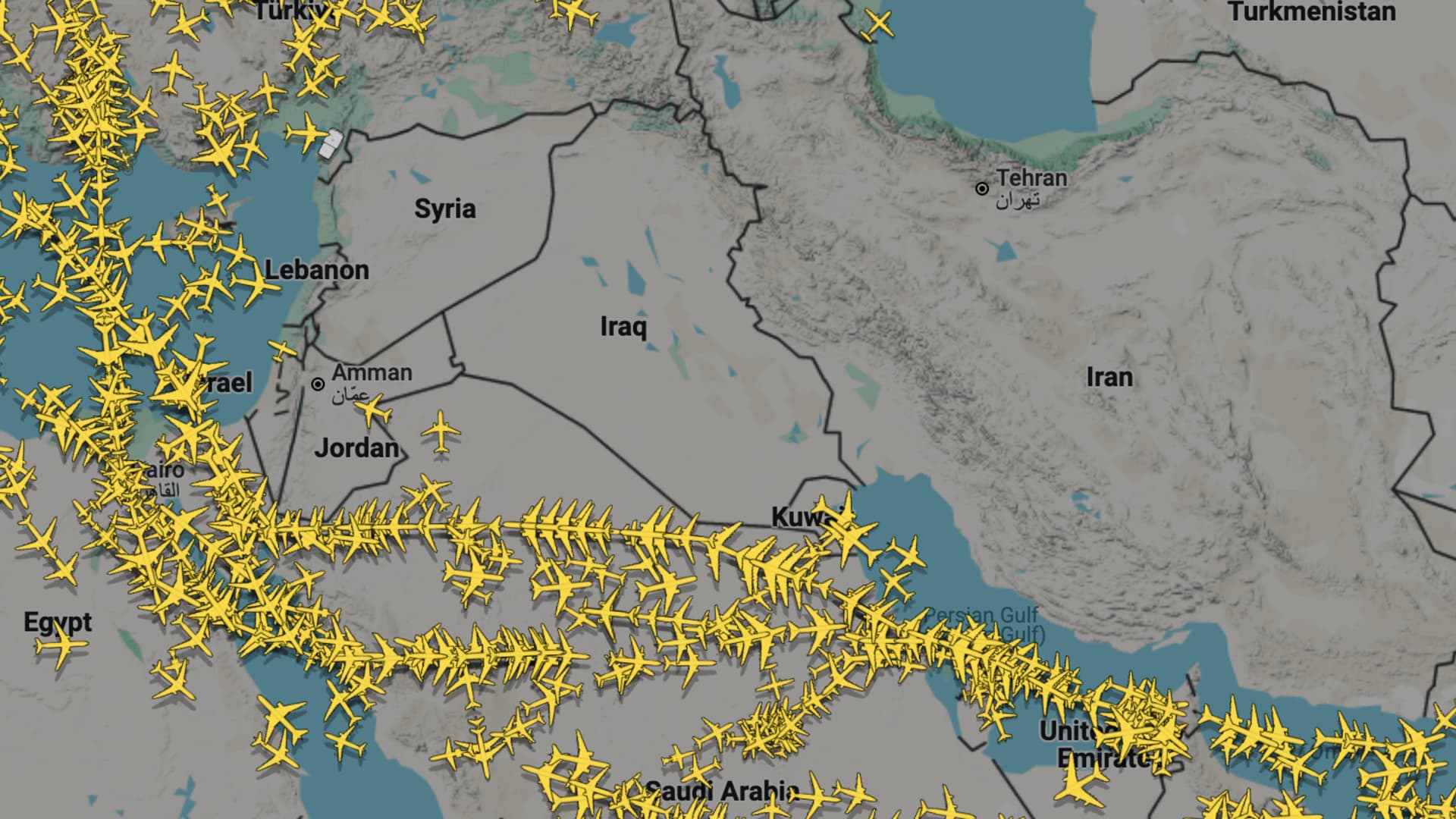Impact of Israeli Strikes on Iran: Disruptions in Middle East Airspace and Airline Operations
The recent Israeli military strikes against Iran have triggered significant upheaval across Middle Eastern airspace, compelling numerous airlines to cancel, divert, or suspend flights. This report delves into the cascading effects on commercial aviation, the scope of airspace closures, and the strategic responses enacted by airlines to ensure passenger safety and operational continuity.
—
Widespread Airspace Closures and Flight Disruptions
Following the Israeli military actions targeting Iran and surrounding regions, major airspace corridors across the Middle East have closed or experienced restricted access. These closures were rapidly enforced to mitigate risks associated with potential escalations or unintended encounters during military operations.
– Airspace Shutdowns: Key Middle Eastern airspace segments, including those over Iraq, Jordan, Lebanon, Syria, and Iran, have been effectively shut down for commercial flights. Additionally, Israeli airspace itself has seen closures as the Israel Air Force engages in active operations.
– Flight Diversions: Numerous international flights that traditionally traverse these air routes were rerouted, leading to increased flight durations, fuel consumption, and logistical complexity. Airlines activated contingency plans to navigate around conflict zones, often diverting to southern corridors or alternate international routes to maintain connectivity without compromising safety.
—
Airlines’ Responses: Cancellations and Suspensions
The ripple effects on airline activities have been swift and pronounced. Leading carriers originating from or operating within the Middle East and beyond have taken precautionary steps:
– Emirates Airline: As the Middle East’s largest carrier, Emirates cancelled flights to and from multiple affected destinations including Iraq, Jordan, Lebanon, and Iran. This broad suspension reflects both precautionary safety measures and regulatory compliance with temporary airspace restrictions.
– Qatar Airways: Similarly, Qatar Airways halted flights to Iran, Iraq, Syria, and notably canceled scheduled services to Damascus due to increased risks and airspace closures.
– flydubai: The budget carrier suspended flights to several regional destinations, including Amman, Beirut, Damascus, Iran, and Israel, indicating the considerable breadth of disruption across Levantine and Gulf air routes.
– Israeli Carriers (El Al, Israir, Arkia): These airlines also faced operational challenges, necessitating flight diversions and cancellations amidst the volatile security environment.
– American Carriers: Delta and United Airlines responded by canceling their service to Tel Aviv temporarily, reflecting a global dimension to the fallout as airlines worldwide re-evaluate flight safety in the region.
—
Operational Challenges and Strategic Adjustments
The unfolding crisis underscores the complex interplay between geopolitical conflict and civil aviation. Airlines have had to balance passenger safety, regulatory requirements, and operational viability while adapting to rapidly evolving circumstances.
– Flight Rerouting: Airlines like Wizz Air announced rerouting strategies for the next 72 hours to avoid impacted airspace sectors. This approach entails intricate coordination with air traffic control, increased operational costs, and logistical adjustments to schedules.
– Passenger Communication: In this environment of uncertainty, airlines are tasked with continuously updating travelers on cancellations, reroutes, and potential delays, emphasizing transparency to maintain customer trust amid disruption.
– Regulatory Coordination: Compliance with directives from aviation authorities and governments concerning airspace closures remains critical. Airlines work closely with regional regulatory agencies to ensure safe corridors and air traffic deconfliction.
—
Broader Implications for Regional Aviation and Security
The current airspace shutdowns and flight suspensions highlight the vulnerability of commercial aviation to geopolitical volatility in one of the world’s most strategically important regions. Beyond immediate operational impacts, these developments portend longer-term considerations:
– Economic Impact: The Gulf region, a vital hub linking Asia, Europe, and Africa, may witness economic ripples from reduced air traffic, affecting tourism, trade, and cargo movement.
– Heightened Risk Perception: Airlines and passengers may grow wary of routing through or near conflict zones, potentially reshaping future route planning and growth strategies for carriers in and around the Middle East.
– Security Protocol Evolution: The aviation industry may accelerate enhancements in conflict-zone risk assessment, crisis response procedures, and real-time intelligence integration to improve preparedness for future incidents.
—
Conclusion: Navigating Turbulence Amid Uncertainty
The Israeli strikes on Iran have precipitated a swift and widespread disruption of Middle Eastern airspace, compelling airlines to enact comprehensive cancellations, diversions, and suspensions to safeguard passengers and crews. These measures, while disruptive, underscore the aviation sector’s resilience and adaptability when confronted with geopolitical crises.
Looking forward, the incident reveals the fragile interdependencies among national security, international aviation operations, and regional stability. Airlines, regulators, and governments alike will need to continue collaborating closely to navigate the evolving security landscape, ensuring that essential air travel connections are maintained safely amid ongoing regional uncertainties. The balance between risk management and operational continuity will define the trajectory of Middle Eastern and global aviation in the aftermath of these events.





